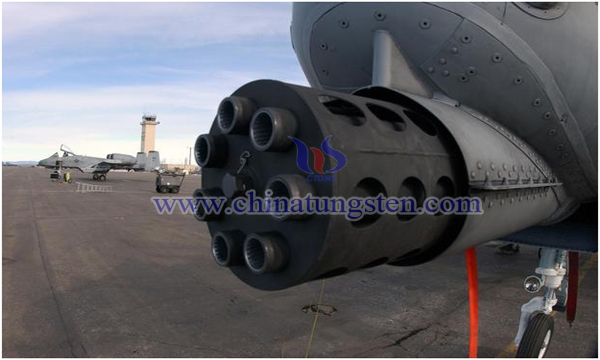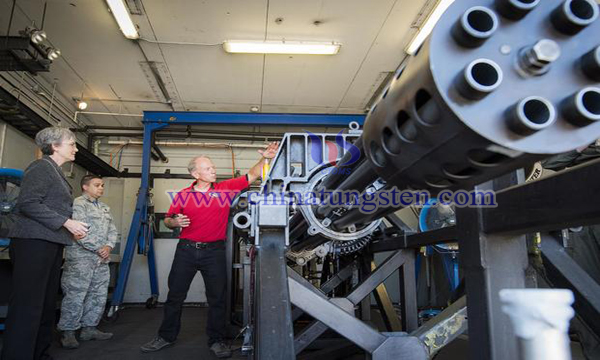A-10 Thunderbolt II Attack Plane Uses Tungsten Alloy Bullets
- Details
- Category: Tungsten Information
- Published on Friday, 07 June 2019 18:24
A-10 Thunderbolt II is a single-seat twin-engine attack aircraft made by US which provides a support for ground forces, including attacking enemy tanks, armored vehicles, armed vehicles, and important ground targets.
This attack plane was developed in 1967. It began to be equipped with troops in 1975. It was discontinued in March 1984. A total of 713 US Air Forces were delivered. The A-10 is expected to serve until 2030. In order to allow the A-10 Thunderbolt II fleet to fly until 2030, recent US Air Force officials said they are planning to change the depleted uranium bomb used in the main gun to a tungsten alloy bullet.

The main task of the A-10 is close-to-ground air support, which requires close attack on enemy ground air defense firepower, and the A-10 has a low speed and a large chance of being hit, so the high survivability becomes a design focus. Therefore, the design of the A-10 is extremely tough, sturdy and durable in combat. The internal structure of the A-10 has a high-strength body structure, which makes the battlefield survival rate very high and can withstand many serious damages during the battle.
In addition, although the A-10 can mount a large number of weapons and pods, its most chilling weapon is the built-in 30mm GAU-8 Avengers. This is the most powerful airborne cannon ever. It can launch 3,900 large-diameter depleted uranium armor-piercing rounds per minute, with high-density warheads and high-speed effective penetration of tank armor.
In 2015, the US used a slightly radioactive depleted uranium bomb to deal with ISIS oil trucks in the fighting between Iraq and the Islamic State of Syria. Depleted uranium bombs are used to pierce armored vehicles because it is 60% more dense than lead. However, it still has the same chemical toxicity as natural uranium, which will not only affect the ecological environment of the region, but also the health problems of airborne personnel. So US Air Force officials are weighing the battlefield situation of depleted uranium bullets and when they can use tungsten substitutes.

Tungsten is comparable to uranium, but at a slightly lower density, but tungsten has little to no health damage to the environment and operators, except that DuPont, the manufacturer, must balance the weight to about 14 ounces of unit weight for today's PGU-14 depleted uranium. Try to keep the weight of the bullet unchanged to accommodate the multi-barrel cannon, but because of the slightly lower density of the tungsten material, they need to add other metals to make the tungsten meet the requirements. US Air Force officials said that if tungsten can meet the requirements, they will switch to tungsten.
DuPont's designers said: "When the A-10's GAU-8 / A Gatlin automatic gun is full, it weighs about 4,000 pounds. This is the world's largest flying gatlin gun, they are Designing and testing a tungsten wheel that is code-named PGU-15, testing the relevant cycle time of the machine gun, which is very important in the Gatlin rotary machine gun. Currently, the US Air Force is still verifying the speed and accuracy of the tungsten bullet.
- Tungsten Alloy Manufacturer & Supplier, Chinatungsten Online: www.tungsten-alloy.com
- Tungsten News & Prices of China Tungsten Industry Association: www.ctia.com.cn
- Molybdenum News & Price: news.molybdenum.com.cn
- Tel.: 86 592 5129696; Fax: 86 592 5129797; Email: sales@chinatungsten.com



 sales@chinatungsten.com
sales@chinatungsten.com